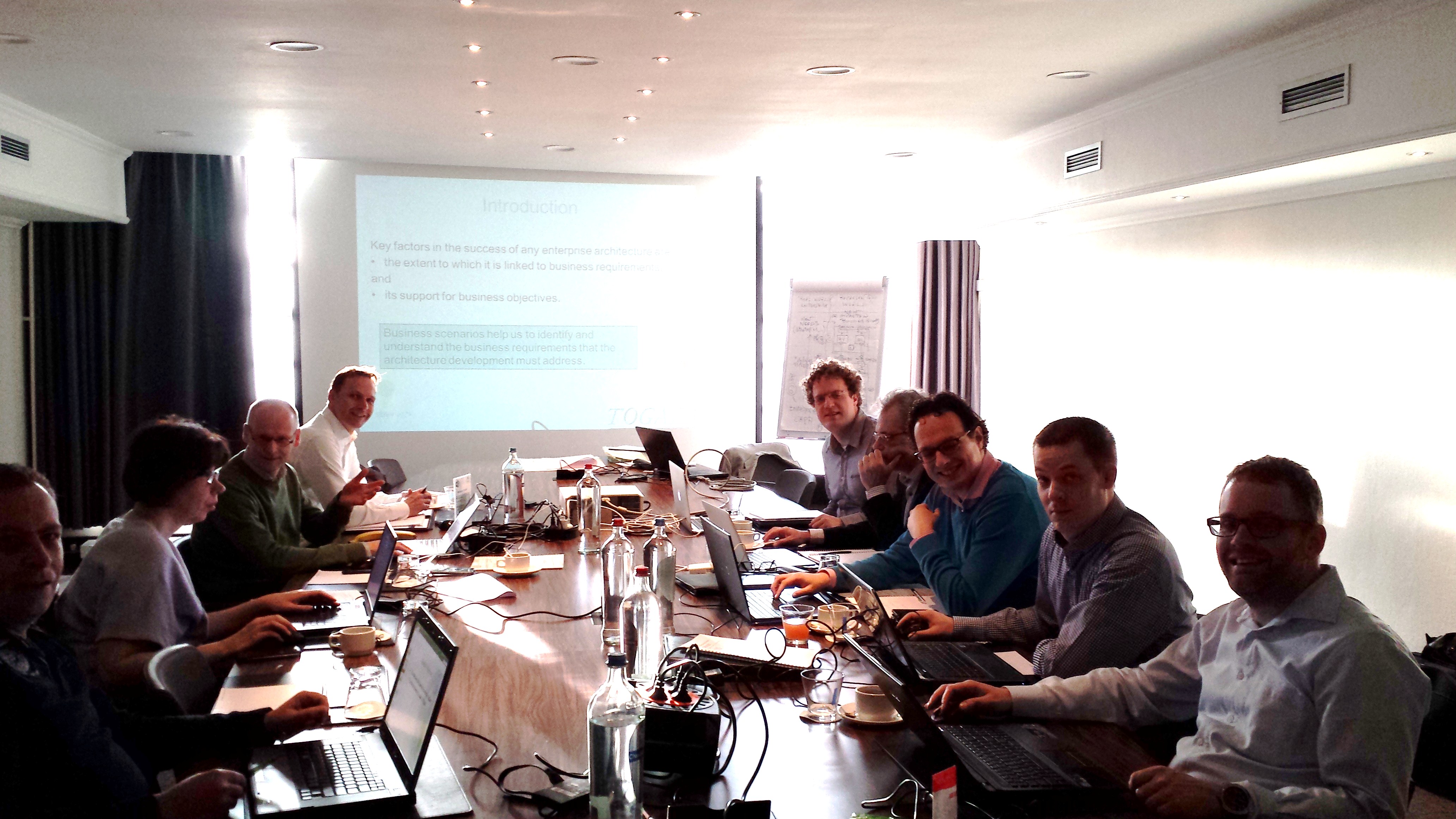BPM for an Agile Digital Alignment
Business Process Management, Modeling and IT Mapping in the Digital Age using the OMG's BMM, BPMN and UML standards
Duration : 2 days
Objective : Helping attendees understand how to efficiently manage, model and validate their business processes and organization assets in order to increase business agility of their organization on the basis of business goals, changing digital market needs and steps of the customer journey.
This 2 day training course aims at helping delegates to learn how to model and manage their business processes and enterprise resources in order to adapt them to digital disruptions based on goals, values, strategies and capabilities.
On the basis of the of key elements of the business performance (strategies, tactics, KPI, business capabilities, etc...), delegates learn there how to elaborate a customer centric digital vision based on cartography of business process and resources.
Then, using the appropriate elements of BPMN and business extensions of UML notations adapted to their language (profiles for strategists, architects, analysts,...), they discover how to adapt business processes to changing goals, strategies, policies and rules also by considering feedbacks captured through the steps of their customer journey.
Prerequisites : None
Participant Profiles : Business Strategists, Enterprise Architects, Business Architects, System Architects, Business Analysts, System Analysts
Detailed Description :
Introduction
- Definition of an Agile Digital Enterprise and its Business Process Management (BPM),
- Place of the BPM in the enterprise architecture’s purposes of Zachman, UAF, NAF and TOGAF regarding the Digital Transformation
Elements of the Business Architecture and Processes for an Agile Digital Enterprise
- Essential tools of the business management in the Digital Transformation : The Business Motivation Model, Business Activity Monitoring (BAM), Strategy Map, Value Chain and Value Propositions in the context of Digital Transformation,
- Business Architecture : the missing link between business strategy and the enterprise architecture,
- Connections between the Business Architecture, BPM and SOA,
- Business Motivation Model (BMM) vs. Enterprise Business Motivation Model (EBMM) and other Business Models,
- The core structures and relationships in the Business Motivation Model (SWOT analysis, business vision, goals, objectives, missions, strategies, tactics,... ) toward business processes,
- Guiding the Operating Enterprise using Balanced Score Cards,
- The Business Architecture Views of the OMG : From the Strategy View to the Organizational View throughout Business Capabilities and Processes,
- Business Process Management & Process Modeling : Essential elements : Conceptual and Organizational Process Descriptions, best practices...
- Business Process Modeling with BPMN adapted to the language of business owners and analysts : Basics, Process, Sub-process, Activity, Task, Pool, Lane, Detailed Events and Gateway typology, Synchronization, Connectors, Message Flows, Compensations, Good practices,...
- An Overview on the Process Modeling using BPMN and UML, Process Execution, BPMS and Business Activity Monitoring tools,
- Case Study : Refine Business Goals and Strategies based on the Business Vision toward Processes and Assets
Gaining Digital Agility with the Business Process Management using BPMN and Business Extensions of UML
- How to model business processes to render the underlying IT system more reactive to changes according to Enterprise Architecture Layers ?
- Dealing with changes on business process mapping,
Updating the Target Architecture by changing strategies while capitalizing on Business Capabilities,
Case Study : Elaborate an agile process and asset modeling easy to maintain in face of changes
Adapting "business models" to digital disruptions and customer journey
- Modeling changes on goals, strategies, rules and consumer journey,
- How to adapt processes and assets in coherence to such evolutions ?
- Case Study : Adapt business processes and assets to changes
Conclusion
- Steps of an efficient Business Process Management including Modeling, Measuring and Optimizing Processes and Assets of the Organization in the Digital Era,
- Frameworks for tracing business requirements from the Business Motivation Model elements toward IT structures in order to better govern them in face of change.
Notice : In case of "on-site" delivery of such a workshop session, we can also adapt its content and case studies to your needs and business case in order to provide you with a good starting point and roadmap.
The logos BMM, BPMN and UML referenced on this site are trademarks of the Object Management Group (OMG).

